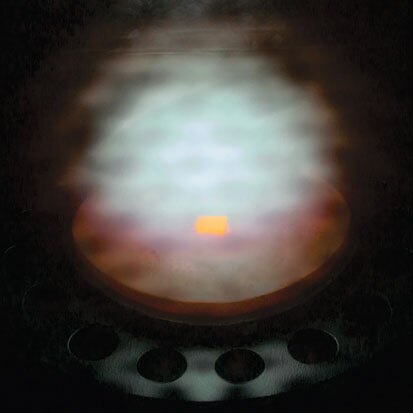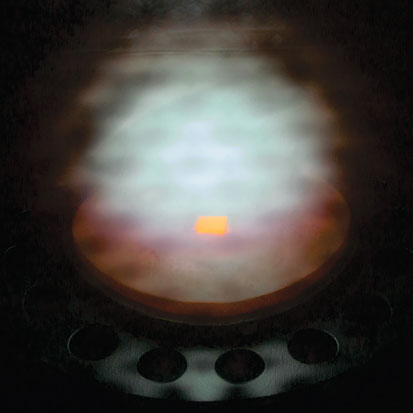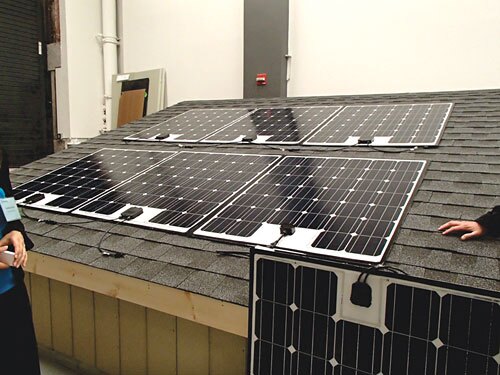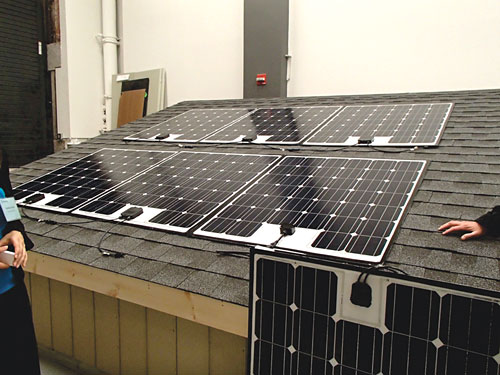Bridging academia and industry the Fraunhofer way
DOI: 10.1063/PT.3.2579
“We file at least two patents per day—one in the morning, one in the afternoon,” says Georg Rosenfeld, director of research at the Fraunhofer Gesellschaft (Fraunhofer Society), Europe’s largest organization for applied research. “Most are generated within our own research activities. But everything we do is geared toward the needs of industry.”
The Fraunhofer Gesellschaft was founded in 1949 in postwar Germany. Today in that country it boasts 67 institutes in all major branches of engineering, a budget of €2.1 billion ($2.6 billion), and some 23 000 employees. Sites outside Germany are smaller and are called centers; there are seven in the US—with a total of about 180 researchers—and eight scattered across Europe and elsewhere. Fraunhofer representatives in Asia, the Middle East, and South America look for industrial opportunities and research partners. In total, the society has around 10 000 joint projects with industry each year. It’s no surprise that Fraunhofer is a household name in Germany. And President Obama points to it as a model for his $1 billion initiative to create a network of institutes for manufacturing innovation.
At a 30 September celebration of Fraunhofer’s 20 years in the US, Andre Sharon, who heads the Boston University–based Fraunhofer Center for Manufacturing Innovation (CMI), said the key to the society’s success is “that 30% of our funding is everlasting.” That is in contrast to the usual government funding model in the US, where new initiatives are left to sink or swim after 5 or 10 years. Sharon’s partner at the podium, Dieter Rombach, director of the Fraunhofer Institute for Experimental Software Engineering in Karlsruhe, emphasized the other 70% of funding, which is made up largely of awards from industry and government. “The measure for success is industry income,” he said. “Employees complain about this pressure. But it ensures great applied research. If you cannot sell it, it’s not Fraunhofer.”
Now and the future
The “everlasting” funding comes from the German government and, for centers outside Germany, also from the host state or country, industry, utilities, and other local sources. The exact amount a given site receives is tied to the amount it gets from industrial contracts; 30% is approximate—more contracts lead to more in-house support. Very occasionally, an institute or center has been shut or moved to other research settings for failing to win enough industrial contracts. “They were not serving industry according to the Fraunhofer model,” explains Patrick Bressler, who recently moved from the society’s office in Brussels to become executive vice president of Fraunhofer USA. Publishing is not a key performance indicator for applied research, Bressler notes, but Fraunhofer researchers publish papers on their nonproprietary work.
The base funding gives institutes flexibility to develop new ideas, “do research to stay ahead of the curve, and deal with uncertainties in the economy,” says Sharon. At his center, he says, research is split roughly evenly between advanced R&D work for industry and in-house investigations covered by the base funding and external grants. The in-house research is selected with industry in mind—researchers try to anticipate industry’s needs and move their own developments to the marketplace.
Germany puts money into the Fraunhofer centers abroad because the economy and science are global. Says Rosenfeld, “You have to be sure you are at the forefront of your domain. You want to connect with the best people, wherever they are.”
Another reason for nurturing centers in different countries is that cultures differ, notes Thomas Schuelke of the Fraunhofer Center for Coatings and Laser Applications at Michigan State University. “In Germany, you explain to the bones why something will work. In the US, there is a different attitude, a can-do attitude. Even if it doesn’t work, at least you can try it. And sometimes it does work. Sometimes it’s good to look over the fence at other cultures.”
Now Fraunhofer wants to increase technology transfer across the Atlantic, says Bressler. “We see unique opportunities to link US technology strengths with German technology strengths to create world-class joint ventures.”
Innovation is nonlinear
As of 1 January 2015, Schuelke’s group on industrial coatings and diamond technologies will split off from lasers into an independent Fraunhofer center. The coatings are for such things as reducing friction in engine parts to improve fuel efficiency and increasing the lifetime of machining tools. And, says Schuelke, “we have the world-leading effort in making diamonds for applications. It’s always about developing new machinery—either about making a new material, or making it cheaper or better.” Synthetic diamonds are used in high-power and high-speed electronic devices, and diamond-like carbon coatings can increase the lifetime of orthopedic implants. (See photo on page 25.)

A diamond for industrial use as a phosphorus-doped n-type semiconductor crystal is grown in a microwave-assisted vapor deposition reactor at the Fraunhofer Center for Coatings and Laser Applications at Michigan State University.
CHASE ELLIOT

“We publish, we go to trade shows, and people come to us. We also knock on industry doors,” Schuelke says. His group of 10 engineers plus a few students juggles 50 to 100 projects a year. The projects may be with startups, small companies, or international enterprises, and they range from a few thousand dollars to hundreds of thousands and from a few months to years. “It’s a balancing act. It requires planning, patience, infrastructure management,” says Schuelke.
Nearly all heads of Fraunhofer institutes and centers are professors at a nearby university. “We believe that creates the most intimate connections and creates benefits on both sides,” says Rosenfeld. “It makes sure our research is founded on scientific excellence and provides an opportunity for universities to participate. Innovation is typically not a linear process. You have to create connections.” Students do master’s and PhD research in Fraunhofer labs. And there is an exchange of students and senior researchers between Fraunhofer sites in Germany and abroad. The international centers each have at least one partner Fraunhofer institute in Germany.
Eicke Weber, director of the Institute for Solar Energy Systems (ISE) in Freiburg, says, “Because we have to raise money, it forces us to be innovative. Convincing a CEO of a company is a big step.” Since he took the reins in 2006, the ISE has more than doubled in size and budget to 1300 people and €80 million.
Jacqueline Ashmore, engineering program manager at ISE’s sister center in Boston, the Center for Sustainable Energy Systems (CSE), notes the importance of Fraunhofer’s not-for-profit status. “When we walk into a room to talk with industry and they hear we are nonprofit, the tone [of potential collaborators] changes,” she says.
From the MP3 to solar power
The main project at the CSE is a plug-and-play solar panel system (see photo above). The aim is to create a low-cost, easily installable system, says Ashmore, “that you could buy, say, at Home Depot and install in 10 hours.” CSE director Christian Hoepfner says, “We are trying to solve a problem that is US-specific.” Installation of residential solar power costs about three times as much in the US as in Germany, he says, “largely due to codes and standards, construction practices, and political decentralization. There are more than 18 000 jurisdictions with authority on this.” Part of the plug-and-play project involved navigating the codes. And part of the solution is to make the photovoltaic panels just 2 mm thick, so that they could be considered a second layer of roof shingles. The panels also self-test for code compliance and safety. As of press time, the CSE had five industrial partners on the project and was looking for additional companies to commercialize the system.

A plug-and-play solar energy system, developed by a Fraunhofer center in Boston, on display at the 30 September event marking two decades of Fraunhofer presence in the US. The system will be ready for pilot trials by the end of the year and could lower the cost of solar power in the US market.
TONI FEDER

Vaccine production in tobacco plants is a joint project between the CMI, which specializes in automation systems, and the Fraunhofer Center for Molecular Biotechnology in Newark, Delaware. The collaboration started when the US Defense Advanced Research Projects Agency (DARPA) got wind of work at the biotech center, where scientists had found a way to coax vaccines out of tobacco plants. “It’s ironic that you can use tobacco to do good,” says Sharon. “It’s because they’ve been studied for years and their makeup and genetics are so well understood.” DARPA funded work to scale up to millions of vaccine doses. The collaboration “developed a system where robots do everything, from seeding, to providing nutrients, growing, infiltration with a virus,” says Sharon. “We took a farming process and turned it into an industrial process. You could have these factories deployed in third-world countries, or where there is a pandemic.” Now, he says, the Fraunhofer team is collaborating with an industrial partner for clinical trials.
Other products to come out of Fraunhofer research include parts for airplane engines, video compression software, devices that reduce energy consumption in buildings, and terahertz scanners for noninvasive detection of drugs and explosives. Not yet on the market is an emotion-recognition app for Google Glass, announced in August by the Fraunhofer Institute for Integrated Circuits in Erlangen. And based on work by two Fraunhofer institutes, a pilot collaboration with Continental AG to use rubber from genetically modified dandelions for tires is just getting started.
Perhaps the best-known product to come out of Fraunhofer research is the MP3 data format. About 20 years ago, researchers were studying human perception of sound, says Rosenfeld. “The clue was to understand that the brain is able to perceive high-quality sound without all the information that was originally present.” At first, he says, the research was considered “weird” and “not useful.” Later “it met the markets of data compression and portable digital audio players. There it found a window of opportunity.”
More about the Authors
Toni Feder. tfeder@aip.org
